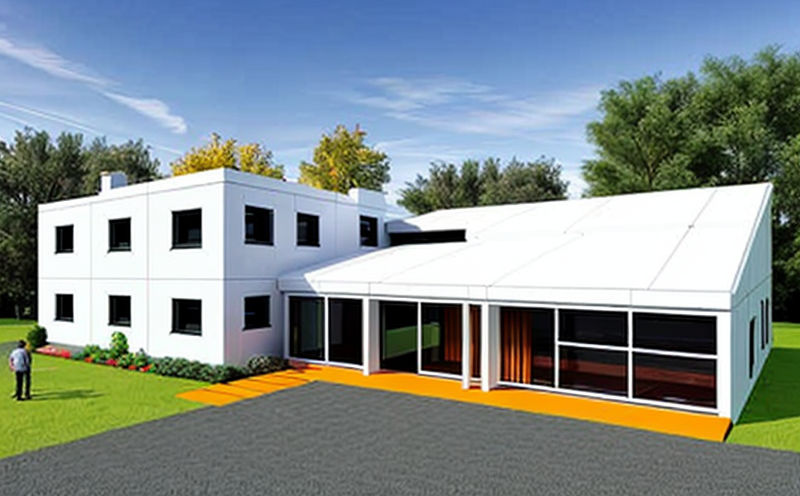Testing the resistance of materials to thermal bridging to avoid heat loss in building envelopes
Testing the Resistance of Materials to Thermal Bridging A Crucial Service for Building Envelope Efficiency
As building owners and architects strive to create sustainable and energy-efficient structures, one crucial aspect often overlooked is thermal bridging. This phenomenon occurs when a material with high thermal conductivity bridges the gap between two insulating materials, allowing heat to escape from the building envelope. Thermal bridging can lead to significant heat loss, increasing energy consumption and greenhouse gas emissions.
To combat this issue, Eurolab offers a specialized laboratory service testing the resistance of materials to thermal bridging. By understanding the thermal performance of various materials and systems, builders and architects can design and construct buildings with reduced heat loss and improved overall efficiency.
Why is Thermal Bridging Testing Essential?
In todays world, energy efficiency is no longer a nicety; its a necessity. Buildings account for approximately 40 of global energy consumption, making thermal bridging a significant concern. By testing the resistance of materials to thermal bridging, businesses can
Reduce heat loss and minimize energy consumption
Decrease greenhouse gas emissions and contribute to a more sustainable future
Enhance building occupant comfort by maintaining consistent indoor temperatures
Meet or exceed regulatory requirements for energy efficiency
Develop cost-effective, high-performance building envelopes
Advantages of Eurolabs Thermal Bridging Testing Service
Our thermal bridging testing service is tailored to meet the specific needs of your business. By partnering with Eurolab, you can expect
Accurate and reliable results Our expert technicians utilize state-of-the-art equipment to ensure precise measurements and comprehensive reporting.
Comprehensive material analysis We test a wide range of materials, including metals, plastics, woods, and composite materials, to determine their thermal bridging performance.
Customized testing protocols Our team works closely with you to develop tailored testing plans that meet your specific project requirements.
Rapid turnaround times Receive timely results and recommendations for improving the thermal performance of your building envelope.
Key Benefits
Improved energy efficiency By identifying areas where thermal bridging occurs, you can make data-driven decisions to reduce heat loss and optimize energy consumption.
Enhanced building durability By choosing materials with high resistance to thermal bridging, you can extend the lifespan of your building envelope and minimize maintenance costs.
Increased occupant comfort Consistent indoor temperatures contribute to a more comfortable working or living environment, boosting productivity and overall well-being.
Regulatory compliance Meet energy efficiency standards and codes while minimizing the risk of non-compliance penalties.
How Does Eurolabs Thermal Bridging Testing Service Work?
Our process is designed to be efficient, accurate, and transparent
Initial consultation Discuss your project requirements with our team to determine the best testing approach.
Sample preparation We provide detailed instructions for preparing the samples for testing.
Testing and analysis Our expert technicians conduct thermal bridging tests using specialized equipment, such as guarded hot boxes or heat transfer analyzers.
Reporting and recommendations Receive comprehensive reports detailing test results, including recommendations for material selection or system design improvements.
Frequently Asked Questions (FAQs)
Q What types of materials can be tested for thermal bridging?
A Eurolabs service covers a wide range of materials, including metals, plastics, woods, composites, and more.
Q How long does the testing process take?
A Our team strives to provide rapid turnaround times, usually within 2-4 weeks, depending on the scope of the project.
Q What is the cost of thermal bridging testing?
A Pricing varies based on project requirements, material complexity, and testing protocols. We offer customized quotes for each client.
Q Why choose Eurolabs thermal bridging testing service?
A Our team boasts extensive expertise in building envelope performance, ensuring accurate and reliable results that inform informed design decisions.
Conclusion
In conclusion, thermal bridging is a critical issue affecting building envelopes worldwide. By investing in Eurolabs thermal bridging testing service, you can
Reduce heat loss and energy consumption
Enhance occupant comfort and productivity
Meet regulatory requirements for energy efficiency
Optimize building envelope performance
Dont compromise on energy efficiency or risk non-compliance penalties. Contact us today to schedule your thermal bridging testing project with Eurolab. Together, we can create a more sustainable future for buildings and the environment.




